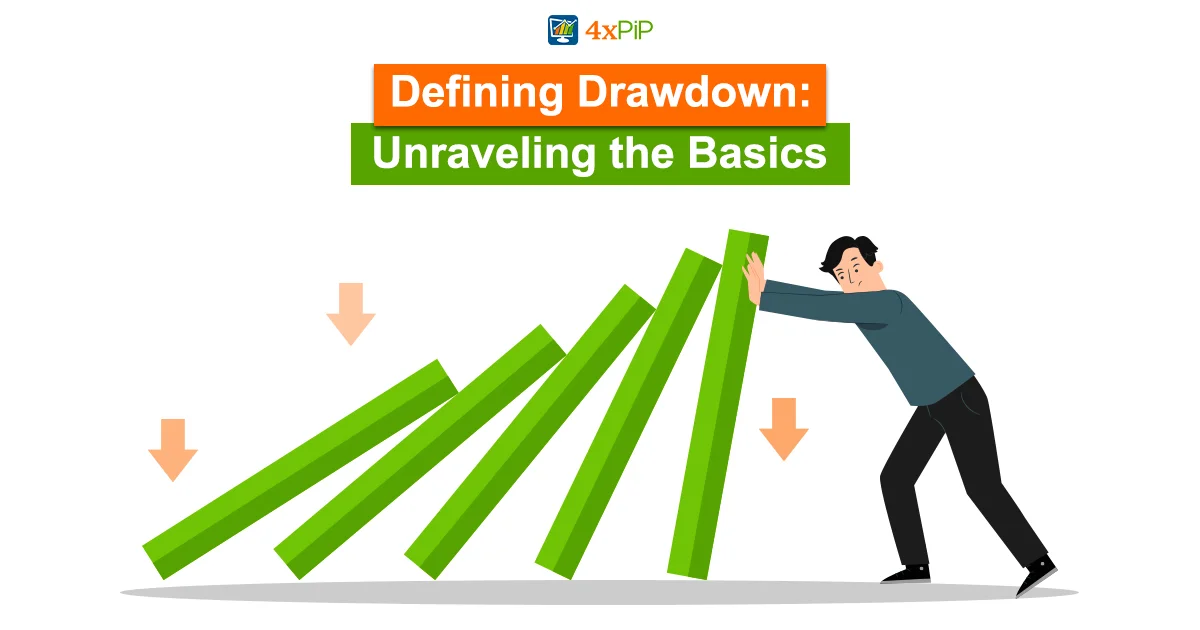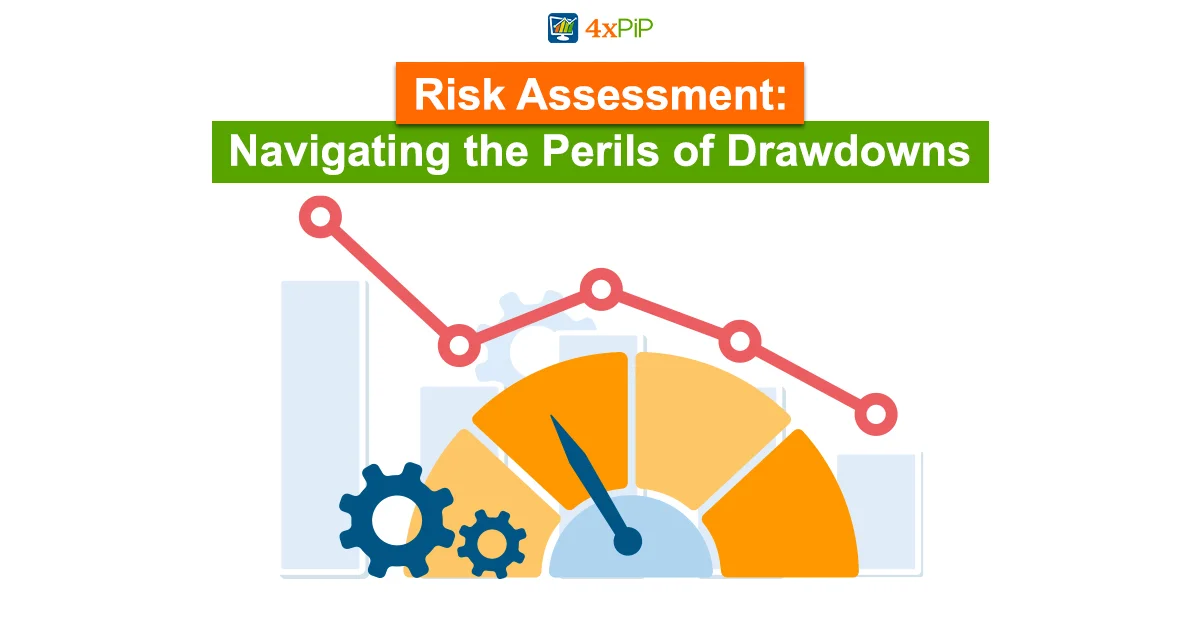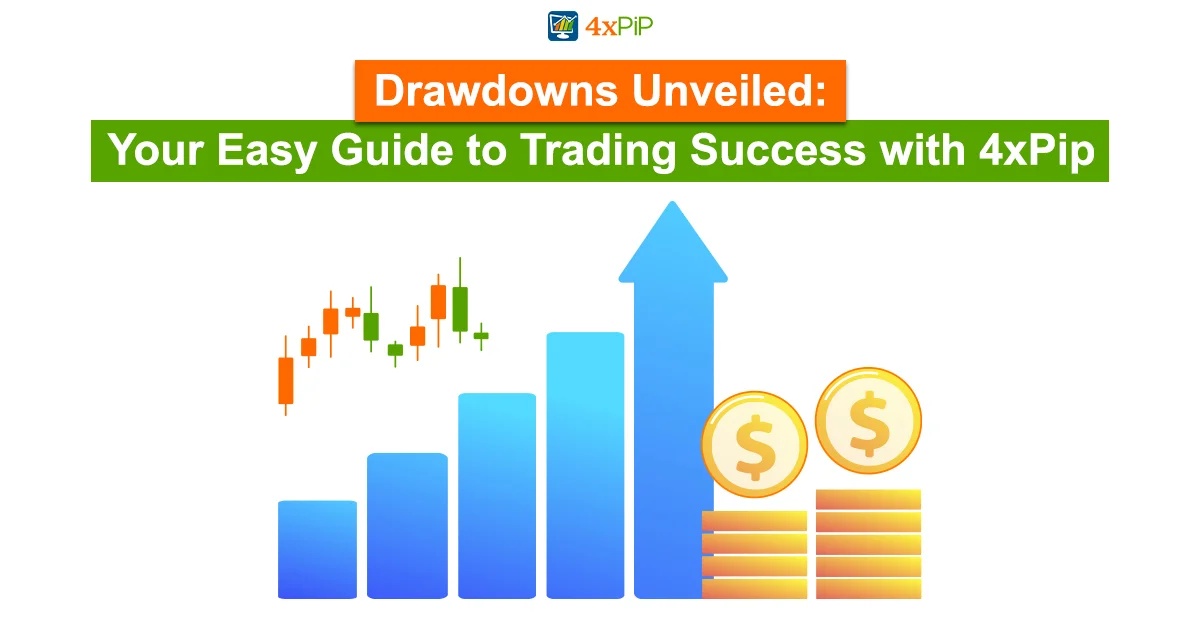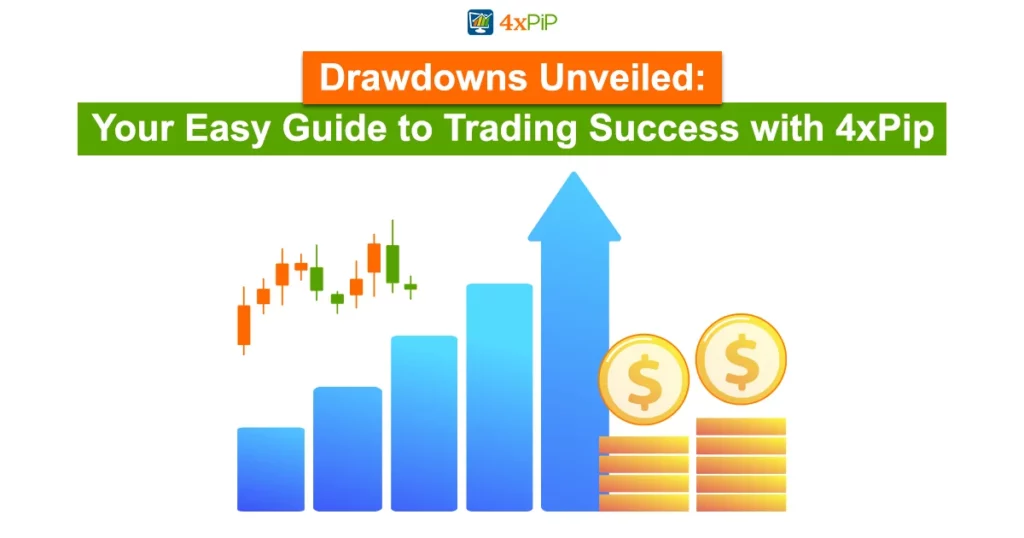In this detailed exploration of drawdowns, we’ll delve into the definition, risks, and examples to equip both unfamiliar and experienced traders with essential insights. As you go around the complexity of drawdowns, remember that mitigating risks is crucial for a successful trading journey. At 4xPip, we prioritize your trading experience, offering expert advice and modern tools for effective risk management. Reach out to us at [email protected] for personalized guidance.
Defining Drawdown: Unraveling the Basics

A drawdown is the measure of decline experienced in investments, trading accounts, or funds from the peak to the trough within a specific time frame. Typically expressed as a percentage, it offers insight into historical risk, facilitating performance comparisons and evaluations of individual trading progress. For for example, imagine a trading account initiating at $10,000, then decreasing to $9,000, and subsequently recovering to surpass the initial $10,000 — this scenario represents a 10% drawdown. At 4xPip, we prioritize the comprehension of drawdowns, considering them a foundational element of risk management applicable across diverse markets, including stocks, forex, and cryptocurrencies.
Also, understanding drawdowns is integral to navigating the complexities of trading, ensuring that investors can make informed decisions to safeguard their financial portfolios.
Insights into Drawdown Measurement and Application
Understanding drawdowns involves recognizing that they persist until the price exceeds the previous peak. Essential for assessing financial risk, drawdowns are integral to strategies like the Sterling ratios, offering a perspective on a security’s reward-to-risk ratio. In the realm of stocks, drawdowns measure the negative half of returns, emphasizing the peak-to-trough change. We, at 4xPip, encourage traders to examine closely drawdowns, especially when withdrawals in retirement can significantly impact funds.
Risk Assessment: Navigating the Perils of Drawdowns

Drawdowns present a significant risk to investors, urging thoughtful consideration of the potential uptick required for recovery. Even a seemingly modest 1% loss might appear manageable, but a 20% drawdown necessitates a substantial 25% return to reach the previous peak. The harshness of drawdowns, An example of by the 50% downturn during the 2008 recession, underscores the need for a remarkable 100% increase to restore the former peak.
At 4xPip, we emphasize the importance of risk mitigation through the adoption of well-diversified portfolios. Our commitment extends to providing practical tools and valuable insights, empowering traders to navigate drawdowns effectively. Also, with a focus on strategic risk management, we aim to equip our community with the resources they need for a resilient and successful trading journey.
Mitigating Drawdown Risks: Strategies for Different Stages
Mitigating drawdown risks involves strategic portfolio diversification and an understanding of recovery windows. For those early in their careers, a 20% drawdown limit, often recommended by financial advisors, may adequate. However, retirees face a more time-sensitive scenario, emphasizing the need for a cautious approach to drawdown risks. A diversified portfolio spanning stocks, bonds, precious metals, commodities, and cash instruments becomes a shield against drawdown impact, aligning with 4xPip’s commitment to comprehensive risk management.
Time to Recover: Evaluating Drawdowns in Context
The time required for recovery from drawdowns is just as important as the harshness of the drawdown. It is a critical factor that varies across different investments, necessitating thoughtful considerations. Certain investments may experience a rapid rebound, swiftly returning to peak value, while others may take extended periods, possibly years, to recover. At 4xPip, we emphasize the significance of comprehending drawdowns within the specific context of each investment’s historical recovery patterns. This approach offers traders a holistic perspective on risk assessment, allowing for informed and strategic decision-making in the ever-changing landscape of financial markets.
Example of a Drawdown: Illustrating Real-world Scenarios
To grasp drawdowns better, let’s explore a practical example involving the purchase of Apple (AAPL) stock. Understanding the 27.3% drawdown from $110 to $80 underscores that drawdowns aren’t synonymous with losses. Furthermore, the subsequent rally to $120, followed by drop to $105, introduces 12.5% drawdown, showcasing dynamic nature of drawdown calculations. 4xPip encourages traders to dissect such examples, reinforcing the idea that drawdowns are an inherent part of market fluctuations.
Drawdowns Beyond Stocks: Retirement, Loan, and More
Distinguishing between stock drawdowns and retirement drawdowns is essential. While stock drawdowns focus on peak-to-trough declines, retirement drawdowns revolve around income withdrawals during retirement. Moreover, balancing drawdown percentages becomes crucial for retirees, ensuring financial stability without leaving behind unutilized funds. Additionally, understanding loan drawdowns, disbursement of funds from lenders to borrowers broadens perspective on varied contexts in which drawdowns manifest.
Conclusion
In this comprehensive guide, we’ve made their way around complexity of drawdowns, from definition to practical examples and diverse applications. At 4xPip, we prioritize your trading success, offering expert advice and modern tools for effective risk management. Reach out to us at [email protected] for personalized guidance tailored to your unique trading journey. Also, as you embark on your trading attempts, equip yourself with the knowledge and strategies to go around drawdowns successfully.












